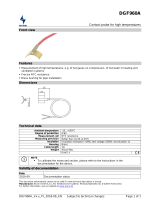Pixie service manual
3
7.4.10Remove housing right.............................................................................39
7.4.11Remove main assembly .........................................................................44
7.4.12Remove front ring...................................................................................46
7.4.13Remove key caps of push buttons..........................................................47
7.5 Replacing pump............................................................................................... 48
7.6 Replacing functional block............................................................................... 50
7.7 Replacing brewing unit..................................................................................... 52
7.8 Replacing flow meter ....................................................................................... 57
7.9 Wiring diagrams............................................................................................... 59
7.9.1 Wiring diagram 220 V - 240 V IEC..........................................................59
7.9.2 Wiring diagram 120 V UL (USA / Canada).............................................60
7.9.3 Wiring diagram 127 V IEC (Brazil)..........................................................61
7.9.4 Wiring diagram 127 V IEC (Mexico) .......................................................62
7.9.5 Wiring diagram 100 V IEC (Japan).........................................................63
7.9.6 Wiring diagram 110 V IEC (Taiwan).......................................................64
8 Function tests...................................................................................................65
8.1 Safety instructions............................................................................................ 65
8.2 Required equipment......................................................................................... 65
8.2.1 Overview.................................................................................................65
8.2.2 Pressure gauge adapter.........................................................................66
8.2.3 Mounting pressure gauge adapter..........................................................67
8.3 Measure flow rate ............................................................................................ 68
8.4 Pressure and leakage checks.......................................................................... 69
8.4.1 Preparations ...........................................................................................70
8.4.2 Test run...................................................................................................71
8.5 Measure coffee temperature............................................................................ 72
8.6 Protective earth (PE) continuity test................................................................. 74
8.6.1 What is the protective earth continuity test about?.................................74
8.6.2 General...................................................................................................74
8.6.3 Test sequence........................................................................................75
8.6.4 What to do if the protective earth continuity test fails .............................76
8.7 Protective insulation test.................................................................................. 76
8.7.1 What is the protective insulation test about?..........................................76
8.7.2 General...................................................................................................76
8.7.3 Test sequence........................................................................................77
8.7.4 What to do if the insulation test fails.......................................................78
9 Explosion Drawings........................................................................................79
9.1 EF 280 Explosion drawing............................................................................... 79
9.2 EF 281 Explosion drawing............................................................................... 80
10 Parts List............................................................................................................81
10.1 Nespresso EF 280 / C60 and EF 281 / D60 .................................................... 81
10.2 208 Turmix TX160 CH..................................................................................... 83
10.3 281 DeLonghi EN125 EU................................................................................. 84
10.4 280 Krups XN300510 EU................................................................................. 85
10.5 281 Magimix M110 EU/GB .............................................................................. 86
10.6 281 Koenig D60 CH......................................................................................... 87
11 Notes...................................................................................................................88





















